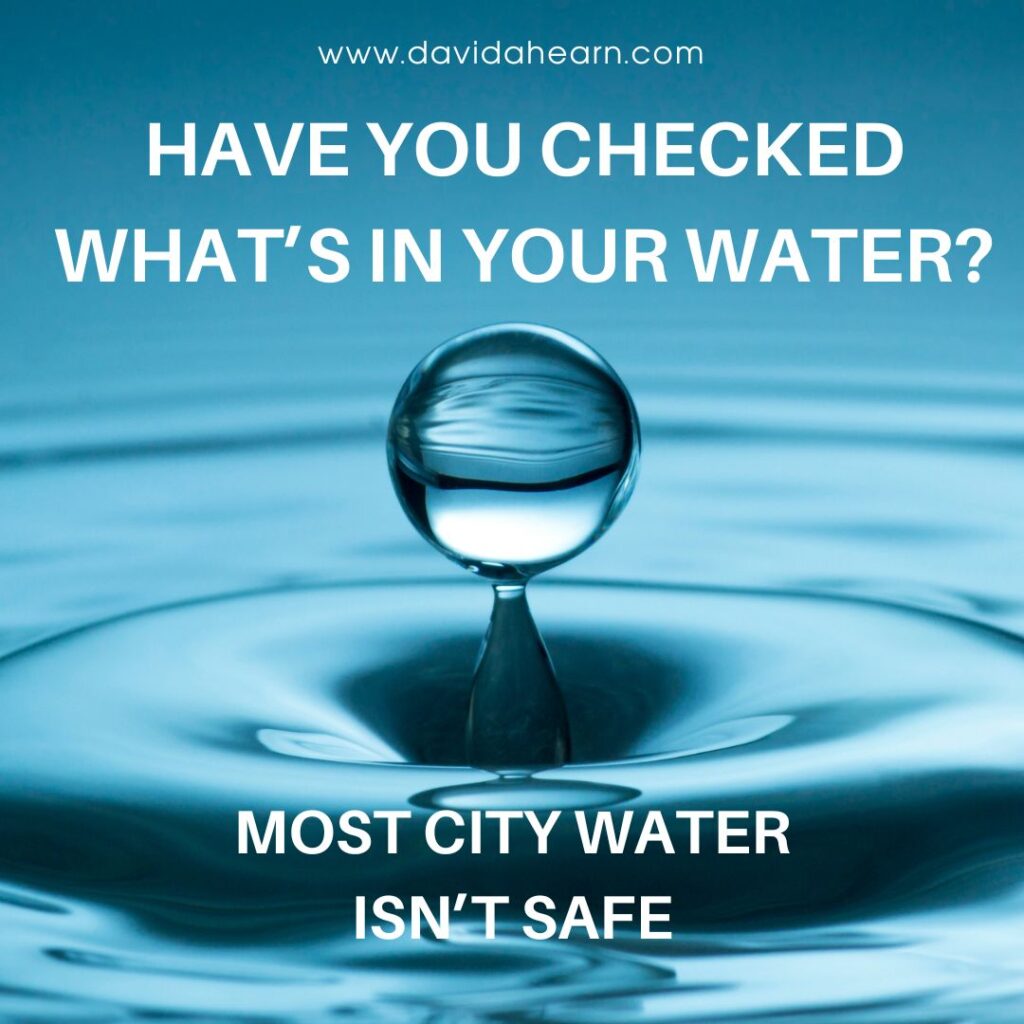Is your tap water really safe to drink? This is a question that might not cross our minds every day as we turn on the faucet to fill a glass, cook our meals, or run a bath. Yet, recent studies reveal a startling reality: millions of Americans are potentially being exposed to drinking water that fails to meet safety standards. In fact, over 70% of tap water in the U.S. contains contaminants, ranging from industrial pollutants to harmful microorganisms, that can pose significant health risks.
The importance of clean drinking water cannot be overstated. It is fundamental to our health and well-being, influencing everything from hydration to the nutritional quality of our food. Our bodies rely on a safe water supply for vital processes, and its purity is essential for not just survival, but for maintaining the quality of life.
As we delve into this topic, we’ll explore the issues surrounding our water sources and illuminate the steps you can take to safeguard your health. Clean water might seem like a basic right in modern society, but the complex challenges it faces requires informed and decisive action from each of us. Let’s set the stage to empower you with knowledge and solutions so you can protect yourself and your loved ones.
Moving to Galveston
Adi and I embarked on a new chapter of our lives when we moved to Galveston at the end of the summer in 2024. This journey was more than just about seeking change; it was intertwined with closing a poignant chapter of our past. Following the passing of Adi’s mom in 2023, we became the caretakers of her old Victorian home on the Texas Gulf Coast. Those familiar with the challenges of maintaining historic houses, especially in hurricane-prone regions, know that they require constant care and attention.
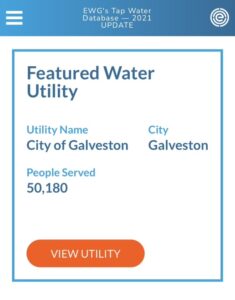
With the flexibility of my work schedule and the ability to work remotely, we were the natural choice to breathe life back into this beautiful home. As we settled into our new surroundings, we found great joy in uncovering the secrets that this grand old house held.
However, one of our first discoveries was less than enchanting. From the moment we turned on the taps, a peculiar, unsettling odor emanated from the water. It was clear: I was not comfortable drinking the city water, let alone using it for bathing. I quickly realized that we had to find a solution to ensure the safety of our water. After all, our skin is our largest organ, and it can absorb significant amounts of substances just from a shower. This immediate concern set us on a journey to investigate and ultimately address the quality of the water in our new home.
Discovery and Research
Concerned by the unsettling smell of our tap water, Adi took it upon herself to delve deep into understanding the water quality in Galveston. Her research journey began with a simple question that quickly unraveled into a complex quest for answers. Equipped with determination and a laptop, Adi scoured a myriad of sources—from local water reports to national studies—in pursuit of clarity and solutions.
What she uncovered was truly alarming. Our concerns about the Galveston water supply were justified, but the problem ran much deeper than we initially thought. After conducting specific tests on our water, Adi discovered that its contaminant levels were more than 450 times over the acceptable standards for water safety. This revelation was not only shocking but also immediately called for urgent action.
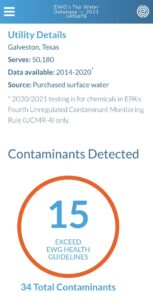
Further investigation revealed that across the United States, millions of citizens unknowingly rely on tap water that harbors a host of contaminants. These range from industrial chemicals, such as pesticides and heavy metals, to potentially harmful microorganisms, all of which can pose significant health risks if consumed over time.
The reality was sobering: a large portion of tap water in U.S. cities fails to meet safety standards, raising the question of just how safe the water is that flows into our homes every day. Adi’s research guided us to an invaluable resource—a website dedicated to analyzing and reporting on water quality across the nation. Through this platform, anyone can evaluate the safety of their own city water, gaining critical insights that might inform proactive measures to ensure safer water consumption. We’ll soon provide a link to this tool so you, too, can uncover the quality of your water and take necessary steps toward protection.
The Dangers of Contaminated Water
The tap water that flows from our faucets, often taken for granted as a clean and safe source of hydration, can harbor a hidden array of contaminants that pose significant health risks. Among the common contaminants found in municipal water supplies are lead, chlorine, and a variety of pesticides.
Lead, a toxic metal, can leach into drinking water through corroded pipes and plumbing systems. It poses severe health risks including but not limited to cancer, particularly to young children, as it can affect brain development and cause learning disabilities, behavior issues, and reduced growth. The dangers of lead exposure are well-documented, prompting numerous public health initiatives to reduce its presence in drinking water.
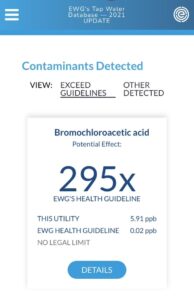
Chlorine, commonly used to disinfect water, might seem harmless given its role in killing harmful bacteria. However, when chlorine interacts with organic matter present in the water, it forms byproducts known as trihalomethanes (THMs). According to recent studies, prolonged exposure to THMs has been associated with an increased risk of cancer, as well as liver and kidney issues.
Pesticides, often used extensively in agriculture to protect crops, can make their way into the water supply through runoff. These chemicals are intended to kill pests but can be harmful to humans, disrupting endocrine systems and potentially leading to reproductive and developmental problems.
Each of these contaminants represents a distinct health threat, but together they underscore a broader issue—ensuring the safety of our water supply requires vigilance and proactive management. Recent studies have reiterated these concerns, highlighting the prevalence of these and other contaminants in tap water across the United States. Understanding these risks and taking steps to mitigate them is crucial for protecting our health and that of our loved ones.
The Importance of Water Purification
As our understanding of tap water contamination deepens, the need to ensure the safety and purity of our water supply becomes increasingly urgent. It is no longer sufficient to assume that the water flowing into our homes is free from harmful contaminants. Taking action to purify water is crucial for safeguarding our health and well-being in an environment where water quality is compromised.
Investing in an advanced water purification system is one of the most effective measures you can take to protect yourself and your family from the risks associated with contaminated water. These systems are designed to remove a wide range of impurities, including but not limited to lead, chlorine, pesticides, and other harmful substances that may infiltrate your water supply.
The benefits of using a sophisticated purification system extend beyond mere removal of contaminants. Such systems often employ multiple filtration stages, targeting specific impurities with precision and efficiency. This not only ensures that the water you consume is cleaner and safer, but also improves its taste and smell, enhancing your overall experience of hydration and food preparation.
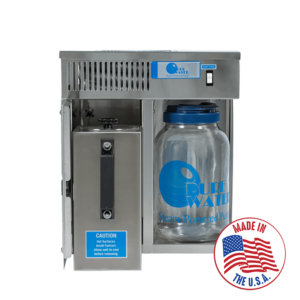
Moreover, a comprehensive water purification approach provides peace of mind. With growing awareness of potential contaminants, knowing you have a reliable solution in place can alleviate concerns about the safety of daily water consumption. Access to purified water directly from your tap allows you to focus more on enjoying life’s other pleasures, rather than worrying about unseen health risks.
In a world where the quality of essential resources is increasingly compromised, taking proactive steps to purify your water supply is both a wise investment and a fundamental act of self-care. By choosing to implement an advanced water purification system, you are choosing to prioritize health, security, and quality of life for yourself and your loved ones.
Steps to Protect Your Health
Ensuring the safety of your drinking water is a vital step in protecting your health and the well-being of your family. With the prevalence of contaminants in many municipal water supplies, it is essential to adopt a proactive approach. Here are some practical steps you can take to safeguard yourself from the risks of contaminated water:
- Test Your Local Water Quality: Begin by understanding the current state of your water supply. Use a trusted website that provides detailed analyses of water quality across the nation. These resources can reveal specific contaminants present in your local water, allowing you to gauge the severity of the issue and prioritize necessary interventions. Access to such information empowers you to make informed decisions about your health. (Test Your water here)
- Install a Reliable Water Filtration System: After identifying the contaminants in your water, consider installing a water filtration system tailored to address those specific concerns. A reliable system can effectively remove impurities, ensuring that every drop you drink is clean and safe. Different systems offer various filtration capabilities, from removing heavy metals and chlorine to addressing microbial contamination. Choose one that best fits your needs, and enjoy the peace of mind that comes from knowing that your water is pure. (See the system Adi and I use)
- Maintain and Monitor Your Filtration System: Regular maintenance and monitoring of your water filtration system are crucial to its effectiveness. Follow the manufacturer’s guidelines for replacing filters and parts, ensuring that your system continues to operate efficiently. Periodically test your water after filtration to confirm that it meets safety standards, adjusting your filtration strategy as needed.
- Educate and Advocate: Stay informed about water quality issues in your community and advocate for improvements in local water management policies. By participating in community discussions and supporting initiatives that enhance water safety standards, you contribute to a broader effort to protect public health.
By taking these steps, you can significantly reduce your exposure to harmful contaminants, ensuring that you and your family enjoy the benefits of clean, safe drinking water. Remember, proactive measures today can lead to a healthier tomorrow.
Time To Take Control
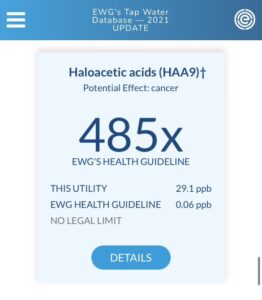
It’s time to take control of your water safety and protect the health of your household. We encourage you to start by checking the quality of your city water through the trusted link provided here. This essential step will inform you about the specific contaminants in your water supply, empowering you with the knowledge to make informed decisions.
Once you’ve evaluated your water quality, we suggest exploring advanced water purification systems tailored to address the impurities found in your supply. These systems offer a reliable solution to ensure every drop of water you consume is clean and safe. After extensive research and trying a couple of different systems Adi and I settled on the following purification system. (Check out the system we are using)
This is a distilled water system and for those of you that say, “But wait, distilled water takes all the minerals out of the water!” This is true but what we have discovered is there are so many things in water now that we have to completely remove everything AND THEN add minerals back into the water. I know, this sucks but this is where we are now because of how polluted our water has become.
Having said all of this, do you own research and discover what is best for your family, but don’t wait. This is a serious issue that needs to be addressed.
Start Today for Your Family’s Health
In a world where the quality of essential resources can no longer be taken for granted, being proactive about water safety has never been more critical. By taking immediate action, you can significantly mitigate the risks associated with contaminated water and safeguard the health of your loved ones.
Your efforts today will pave the way for a healthier, more secure tomorrow. Don’t wait for water-related health issues to emerge—act now to ensure that your water supply is a source of wellness, not worry. Together, let us commit to protecting what is vital: our health and the health of the ones we cherish.
For those ready to take the next step, explore this recommended water purification system here to enjoy the benefits of truly clean water.

